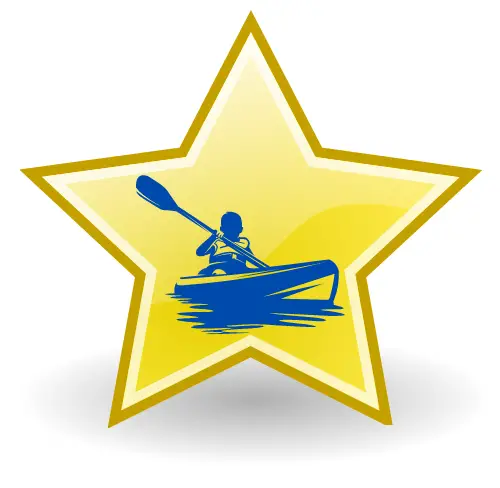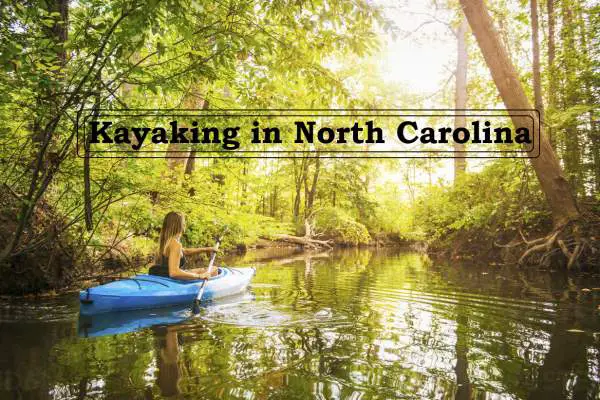Looking for inspiration for North Carolina’s kayaking destinations? It’s a beautiful state with many landscapes. Many water bodies are available in the region that making it ideal for outdoor activities like canoeing and kayaking.
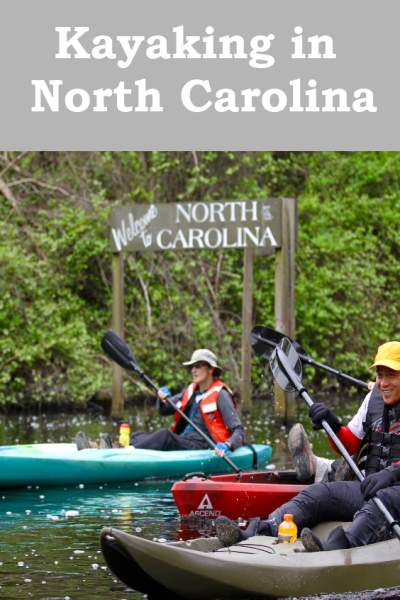
You can kayak anywhere from the Atlantic Ocean to the east to the many lakes and rivers of the inland. If you’re unfamiliar with the area or are unsure where to start, we can help. These are 10 top spots to kayak in North Carolina.
Table of Contents
Roanoke River – North Carolina
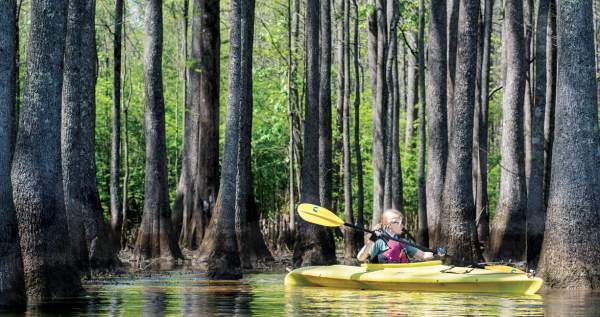
After beginning its journey from Virginia, the Roanoke River flows for over 200 miles through northeastern North Carolina.
A six-mile stretch from Roanoke Rapids to Weldon features Class II/III rapids. You can launch from the Gaston Road ramp and take your boat out at the Weldon ramp.
It is easier to travel after Weldon and more suitable for beginners. From Weldon, you can travel 15 miles to reach the Tillery Camping Platform. Edwards Ferry Boat Ramp takes you another 15 miles. You can however continue following the river to Plymouth and find many camping platforms.
The area is surrounded wildlife-wise, with cypress swamps offering habitat for deer and black bears as well as many birds, and river otter. A mature clump of bald cypress trees adorned with Spanish moss showcases the habitat for a variety of animals.
US National Whitewater Center
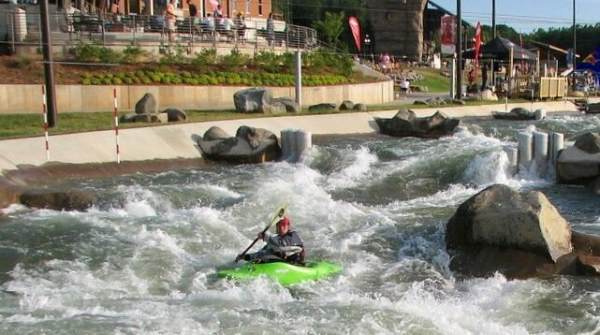
US National Whitewater Center was established with the purpose of getting more people outdoors. Kayaks and rafts can be used on this Class III-IV river, which was man-made. Alternatively, you can rent a kayak or SUP and put it on the Catawba River if you prefer flat water.
One of the great things about the Whitewater Center is that even people who do not love kayaking can find plenty to do. If you come with friends who don’t like paddling, you can enjoy zip-lining, a ropes course, climbing walls, hiking trails, and more. Additionally, there are multiple restaurants on-site, from grab-and-go places to beer gardens and sit-down restaurants.
Lake Brandt
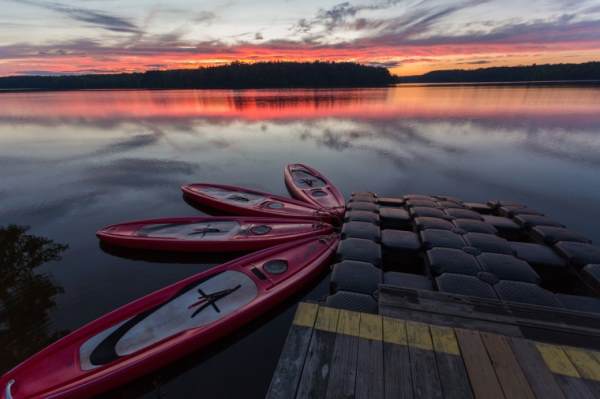
Lake Brandt has been named in honor of Leon Brandt, who was the mayor of Greensboro during 1907-1908. The reservoir has a launchpad for private boats and kayaks as well as canoes.
Swimming is strictly prohibited. However, kayak fishing is allowed. If you have all the gear required, you can catch largemouth bass, catfish, and crappies.
Boat rentals are available for those who don’t own kayaks. A solo kayak goes for $15, while a tandem kayak goes for $25 on a first-come-first-serve basis.
Pamlico Sound
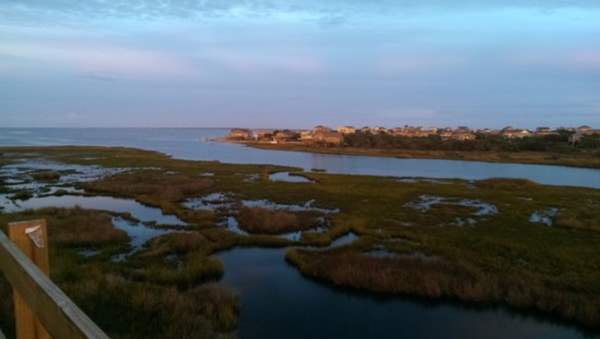
The Pamlico Sound has the East Coast’s largest lagoon. It measures 80 miles long, with a maximum width of 20 miles on the widest sections.
A row of islands such as Cape Lookout National Seashore (or Pea Island National Wildlife Refuge) and Cape Hatteras National Seashore separate the lagoon from the Atlantic. This allows for the calm seawaters to flow. This is the ideal location to learn kayaking.
You will find large populations of shrimp, oysters, and blue-colored crabs in this area. The coastline is home to many creeks and estuaries, so even if you’re not into fishing, there are still miles to explore. These areas are rich in wildlife, so expect a lot of fun. It is important to not get lost, as the lagoon can be quite large.
Nantahala River
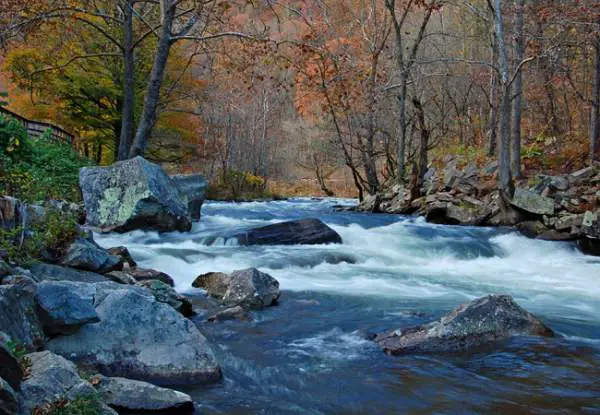
North Carolina’s first whitewater river was the Nantahala. Another great river for beginners, they also offer a kayaking course for those looking for more practice or for some extra confidence. The river is mostly Class II and it ends at Class III Nantahala Falls.
Although the Nantahala River can be both calm, and full of rapids depending upon the area, it is the river’s twenty-named rapids that make it one among the most well-known rivers in the United States. They range from class I to class III. National Geographic named the Nantahala Outdoor Center (Bryson City, NC) as one of the top-rated outfitters in the world. It also offers more than 120 different land-based and river trips. You will also find a world-renowned paddling school and a large retail outlet, as well as three restaurants and on-site lodging. This place is perfect for a weekend getaway!
Little Tennessee River
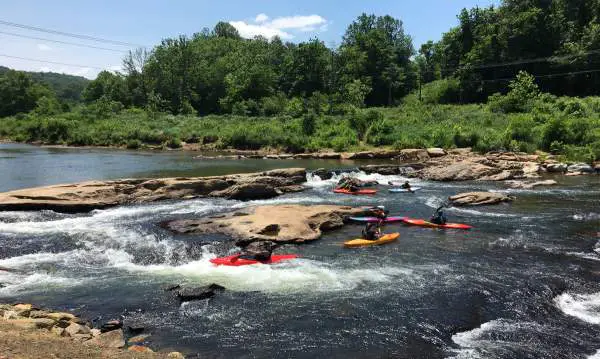
The Little Tennessee River, which is located in the heart of Western North Carolina, is a gem. This hotspot of biodiversity is best seen with a snorkel and mask. The brightly colored fish swimming in the clear, blue water might make you think you’re on a tropical Coral Reef. You can experience rivers from the air by floating or fishing (both great ways to enjoy the river), but it is possible to dive under the water to see a world of fish, freshwater mussels and even a giant salamander called the hellbender. This special river is home to many rare species. The NCWF and other partners have designated it a Native Fish Conservation Area. Fred Harris, NCWF natural resource specialist Fred Harris says this designation will draw attention to the rich variety of native fishes in the river and will ensure their survival.
Lake Johnson

Lake Johnson Park covers 500 acres of North Carolina. Of this, 150 are the lake’s surface. A few sections of the lake are accessible by going past Avent Ferry Road. A few sections of the lake are accessible by going past Avent Ferry Road. A few outfitters have sprung up to help you with your adventure outfit. These areas offer tranquil fingers and marshy wetlands. There are hiking trails and multiple camping sites all around the shore.
You can also go fishing. You will find plenty of largemouth bass shell crackers, catfish, carps, bream, and crappies in the lake. Although admission is free, boat launching and rental fees apply if you do not have one.
Apart from kayaking, there are also paved greenways around the lake and natural surface paddle trails beneath tall tree covers. There is also a swimming area!
Cheoah River
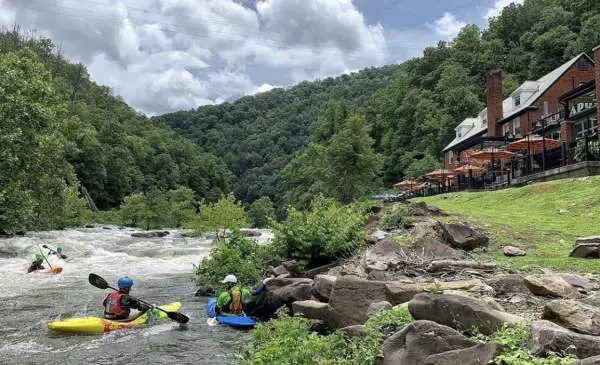
Because of its whitewater, experienced kayakers will find the Cheoah River very exciting. There are many boulder fields along the river, as well as a 12-foot waterfall.
However, the Tennessee Valley Authority has dammed the river’s flow. It is possible to find different rapids depending on the time of year. The TVA publishes the water-release dates to make it easy for you to plan.
You can take a break from all the excitement by stopping at Historic Tapoco Lodge Resort, which is located down the river.
Wrightsville Beach
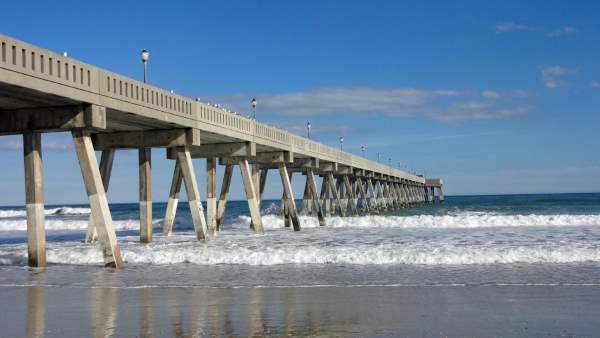
Wrightsville Beach’s crystal-clear waters are a popular spot for kayakers. It is just a short distance from the Atlantic. Wrightsville SUP, Wrightsville Kayak Company, and Wrightsville Beach Kayak Company can all rent you a kayak end canoe.
This area of the ocean is generally calm. It is therefore ideal for beginners to kayak, although things may change. Always remain vigilant.
The land is home to beautiful beaches and a lively island lifestyle that are perfect for tourists. The area also has a variety of restaurants that serve healthy and fresh seafood as well as farm-fresh foods.
Three Sisters Swamp
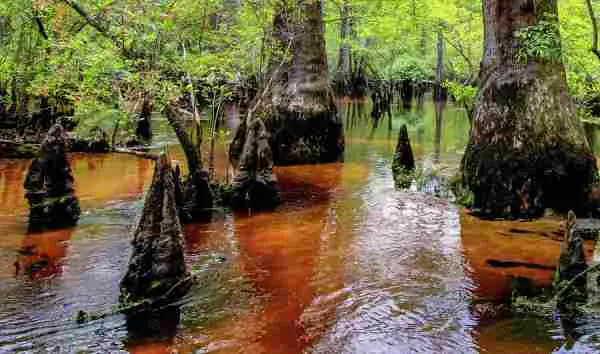
The Three Sisters Swamp may be one the most amazing places in North Carolina for paddling. The Black River runs through the swamp, where you can paddle alongside some most ancient trees on Earth.
Methuselah lives in this swamp, which was once thought to have been the oldest tree east of North America. Many of them were dated back to even further back.
You can launch at Beattys Bridge Road South of Ivanhoe. From there, you can paddle through the swamp to Hunt’s Bluff Boat Ramp. It is approximately 13 miles downriver. There is a campsite at the take-out.
Wilmington can rent a kayak and canoe and take a tour.
The Rocky River
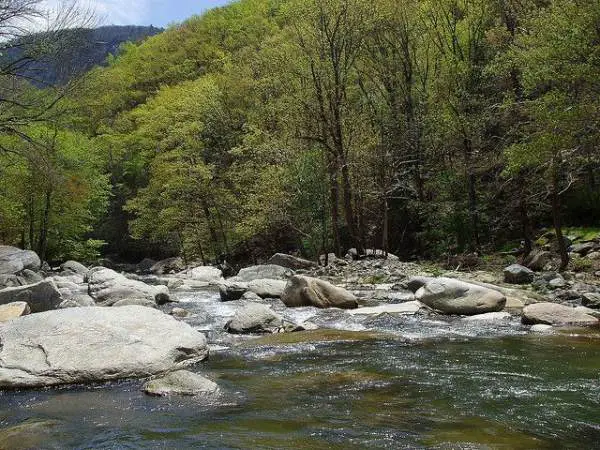
The Rocky River is one of the few places where you can kayak uncrowded near Charlotte. Beginning in Mooresville the kayaking corridor continues to the Pee Dee River confluence. The route passes through Cabarrus and Anson counties. As you travel along the route, you’ll find scenic rock outcrops alongside diverse wildlife.
Pharr Family Preserve, Oakboro Blueway Park I & II, Norwood, and Norwood are just a few of the many launch points that can be found along the river. This river, unlike many others, is not dammed. The water level will be good all year.
Milltail Creek

Milltail Creek in Alligator River National Wildlife Refuge is a great place to kayak end canoe in remote areas. It offers close to 10 miles worth of roundtrip kayaking and canoeing through woods or marshes.
The successful reintroduction programs have resulted in red wolves and black bears as well as many bird species, and copperheads. Timber rattlers are also present. Cottonmouths can also be found. Most likely, alligators will be encountered as you move northwards. These animals are the majority in the region. There are many reasons that have different wildlife. You might spot different animals each season.
The area is among the wildest in North Carolina. If you’re not comfortable kayaking alone, the refuge sponsors regular paddle trips.
Lumber River
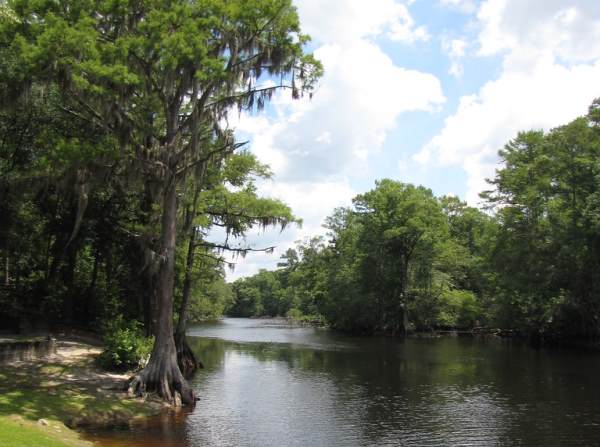
Lumber River is a Wild and Scenic-designated river in South Carolina. It has great swamp and eastern North Carolina wood habitats. There are 24 places where canoes can be accessed at road crossings. This allows for a variety of wildlife such as deer, mink, ducks, and even alligators. The upper section of the river is home to the endangered red-cockaded bird pecked. There are many other rare species, such as river frogs, treefrogs, and giant yucca skippers, that can be found in this area.
While the lower sections of the river are more accessible for novice paddlers, the upper section is difficult to navigate through fallen logs and other obstacles. Even though these logs or sandbars are more difficult to navigate, they can provide habitats for many species. Many anglers can attest to this. Lumber River is a great place to hunt deer or squirrels. It has three boating accesses, which are managed by N.C. Wildlife Resources Commission. Additional hunting opportunities are available on nearby hunting lands like the Sandhills Game Lands and Bullard Hunting Preserve. Also, keep an eye out to look for fossils and artifacts as river banks can be a great spot to find these ancient treasures.
French Broad River
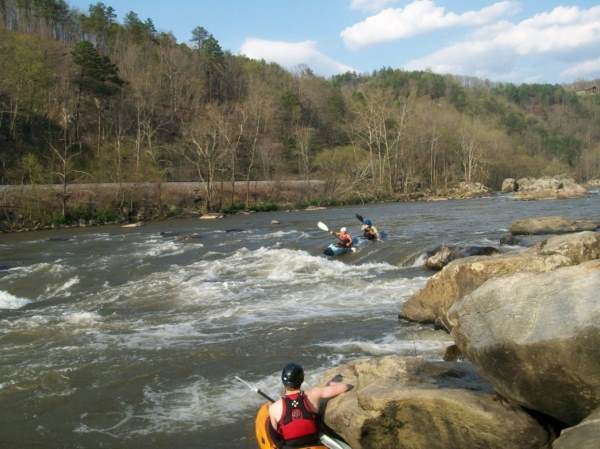
The French Broad River, which flows through Brevard into Asheville via its headwaters, is nestled in the Blue Ridge Mountains. This section is great for kayaking, fishing, tube, stand-up paddling, and stand-up paddleboarding. My favorite section runs from Hominy Creek through Asheville.
The Biltmore Estate flanks the river and this largely undeveloped land supports a wide variety of wildlife. As the river nears Marshall the whitewater section begins. You might consider switching to a raft if you want to watch wildlife as it rolls toward Hot Springs.
Michelle Pentecost (NCWF Board Member) of the French Broad River, Hot Springs: “The breathtaking views of rocky outcrops along with the sparkling roaring of the French Broad River through rural Madison County warmth my soul. It calls me back every year,” she said. Deer, great-blue herons, and other wildlife can be seen along the river. Anglers may also fish for the famous muskellunge, which is sometimes called a “muskie,” although smallmouth bass fishing remains the most popular. Birders will be delighted to spot migrant warblers as well as wood ducks and kingfishers among other species. It is worth spending several days exploring this river to get the full experience. The French Broad River Paddle Trail allows adventurous people to camp along the banks and for several days along the French Broad River’s banks, starting at the headwaters and ending at the Tennessee state line.
Conclusion – kayaking in North Carolina
You should follow all rules and regulations applicable to the body of water in which you plan to paddle. This guide is meant to be used as a reference only. It is not intended for legal advice.
Paddling a kayak requires no license. Only a personal floating device, a paddle, a hydration bottle, and snacks are required to use a kayak. If you plan on fishing, you will need a fishing permit.
North Carolina is home to a great variety of paddle sports, offering something for every taste, even whitewater.
Our best posts:
